The art of ice cream
A summer without ice cream is no summer at all! Christophe Domange, Pastry Chef at L’École Valrhona in Tain l’Hermitage, France and winner of the 2018 Gelato World Cup, agrees: “We eat ice creams and sorbets almost every day of the year!” This article is intended for all those who want to do the same and create their own iced desserts... guilt-free!
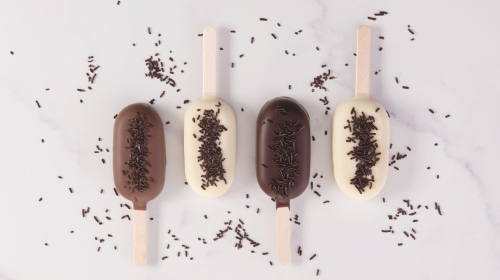
The key question is; what is the difference between an ice cream and a sorbet?
The difference between ice cream and sorbet mainly resides in whether or not the recipe includes fat.
Ice cream is a milk-based recipe. We refer to ice cream when we add egg yolks, butter and cream to the recipe. Mainly composed of water, sorbet is fat-free… but it does contain sugar! So while sorbets contain fewer calories, they also often contain more sugar! Important information for people with diabetes. Did you know? Commercially available “ice pops” contain at least 6% milk powder. If you are lactose intolerant, remember to take a good look at the composition of the water ice you consume!
Is it absolutely necessary to have an ice cream maker to make an ice cream or sorbet?
To this question, Christophe Domange gets straight to the point: “Yes: No ice cream maker, no ice cream! However, you don’t necessarily need a professional-standard self-freezing ice cream maker: the models you find in retail stores do the job well.” Intrigued, we then ask him about the “sorbets” that some food processors make from frozen fruit.
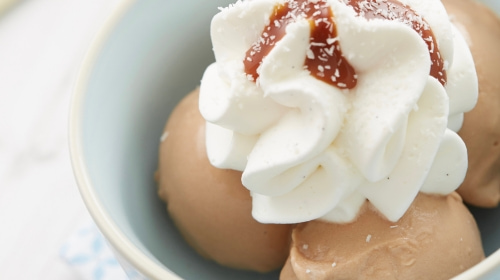
“In terms of taste, these recipes are very good alternatives! But these are quick desserts that can be enjoyed immediately after preparation, as you shouldn’t refreeze products that have already been defrosted!” Out of curiosity, we ask further questions: what about the many recipes that we find online that also promise delicious ice creams without using ice cream makers? “Again, these are alternatives! You can make an iced desserts without these being ice cream, strictly speaking!” adds the pastry chef with a smile. “One of the unique characteristics of ice creams and sorbets is air. This air, which adds a light and smooth characteristic to the recipe, is incorporated when churning and is used... when passing through the ice cream maker!”
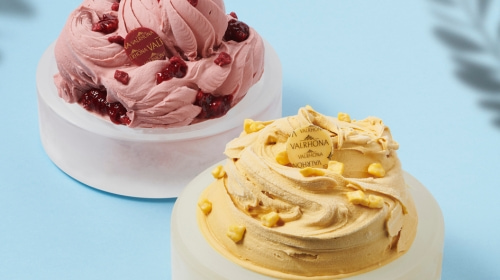
How does a good ice cream or sorbet stand out?
Unsurprisingly, the selection of high quality raw materials (good milk, good chocolate, good hazelnuts, good vanilla, good fruit, preferably local and ripe) is essential for making a good ice cream or sorbet! But the result also depends on balancing your recipe. Solids (including sugar) must represent 36 to 40% of the composition of ice creams and 30 and 33% of sorbets. “With more water, your sorbet will look more like an ice cube!” warns the World Ice Champion! Sugar also plays a key role. Christophe Domange explains: “Sucrose (present in granulated sugar, baker’s sugar, powdered sugar whether cane or beet sugar) has a sweetening power that is stronger than glucose (found in syrup or powder form) but less strong than inverted sugar (purchased in specialist stores) or fructose (present in fruit). It is therefore necessary to choose the right sugars and adjust their quantities according to the ingredients that are incorporated into the ice cream or sorbet to obtain a flavor that leaves room for aromas.”
Do homemade ice creams keep as well as artisan or “industrial” ice creams?
Unfortunately not! Firstly, because there are no added preservatives in home-made ice cream. Secondly, because artisan ice cream makers formulate their recipes down to the last gram, with precise percentages of milk powder, fat and stabilizer. Combined with the use of professional equipment, these elements make it possible to obtain a sufficiently whipped ice cream, containing more air than home-made ice cream, which will keep for several months. Home ice cream will always be denser and must be consumed within a few days after it is made.
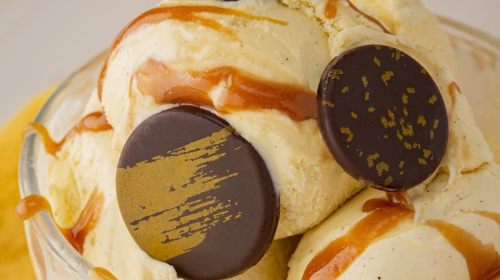
What ingredients should I use in my recipes?
Can we make chocolate ice cream with all Valrhona chocolates?
Yes! Whether it is our white chocolate Ivoire 40%, blond Dulcey 35%, Caramelia 36% milk chocolate or even dark chocolates Caraïbe 66% or Millot 74%, every Valrhona chocolate can be the basis for delicious ice creams or sorbets! “Anything apart from fruit couvertures,” warns Christophe Domange. Why? “The Inspiration range is not suitable for making fruit sorbets: the result will not be satisfactory because the taste will seem diluted. However, the Inspiration range is perfect for making plant-based ice creams! Try Strawberry Inspiration combined with fruit purée mixed with almond milk! You can also use the Inspiration range as an ice pop coating.”
How do I use Valrhona fruit couvertures as an ice pop coating?
Nothing could be simpler: melt the fruit couverture and, to obtain a thin, flexible coating that does not crack when freezing, add up to 10% neutral oil (such as grape seed). Ensure that the temperature of the mixture does not exceed 30°C (85°F) and 35°C (95°F) before dipping the pop ices in the coating. At this temperature, the thermal shock between melted chocolate allows the coating to harden instantly!
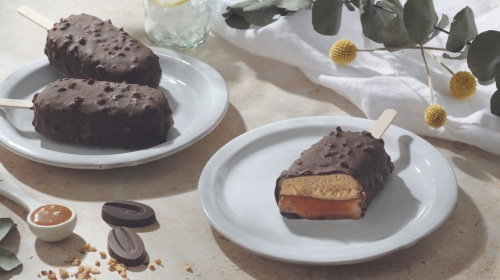
What toppings can you use?
Peta crispies, hazelnut pieces, pecans, caramelized sesame seeds, cocoa nibs, crunchy pearls and more: for Christophe Domange, any of the above work very well with ice creams or sorbets, adding a sparkling, crunchy but above all a gourmet touch, always a safe bet!
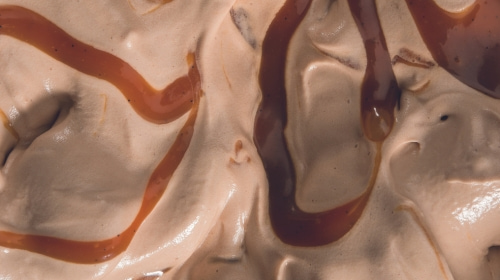
What are the best extras?
Praliné is the World Gelato Champion’s favorite ingredient to add: “I love the crisp texture and roasted notes of praliné. I combine it with a delicious Tahitian or Madagascan vanilla ice cream. To do this, I put the praline in a piping bag then I pipe it over the ice cream as soon as it comes out of the ice cream machine. Then I carefully mix it all together with a spatula.”
How to use ground Nyangbo in an ice cream recipe?
Nyangbo is 68% dark chocolate from Ghana. It is a Grand Cru with lightly toasted notes of sweet spices with mellow vanilla. “I use it a lot to make stracciatella ice cream: I incorporate the shavings into my vanilla ice cream to create a crisp texture. In addition, visually, the result is great!” explains Christophe Domange.
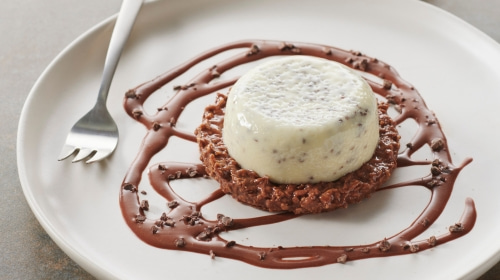
Do you have to use colorants to make an ice cream or sorbet?
Colorants are obviously not required, but they are recommended if you want brightly colored ice cream. The advantage when selecting good products (SOSA red natural colorant, SOSA yellow natural colorant, SOSA blue natural colorant, or SOSA green natural colorant) is that it takes very little to get a great result.
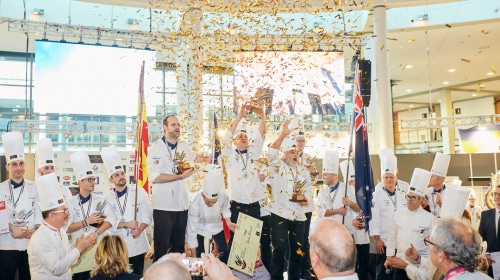
Questions for Christophe Domange, Pastry Chef at L’École Valrhona and 2018 Gelato World Champion
You are a pastry chef, chocolatier, confectioner and ice cream maker. Which of your roles do you prefer? Ice cream maker! I have been working for several years to develop this profession and bring new and creative ideas to the field.
What is your best iced creation? The lobster bisque and langoustine ice cream, made as part of the Gelato World Cup in 2018! The challenge was to create an ice cream in which the sweet taste was totally imperceptible, and since you can’t make ice cream without sugar, the challenge was huge! To achieve this, we chose sugary vegetables rich in fiber and at one point, perhaps thinking from an ice cream maker’s perspective, I replaced olive oil with cocoa butter. This ingredient completely changed the finish of the ice cream without me really understanding the reason at the time! This discovery (which I now understand!) allowed me to develop my recipes and my approach to plant-based ice cream!
Ice cream or sorbet? Sorbet!
What is your favorite flavor? Lemon! It is one of the hardest flavors to balance with chocolate ice cream!
Which fragrance do you like least? Pistachio: I'm not a big fan of this ingredient!
We would like to thank Christophe Domange for his time!
 Microsoft Edge
Microsoft Edge
 Google Chrome
Google Chrome
 Mozilla Firefox
Mozilla Firefox
 Opéra
Opéra


